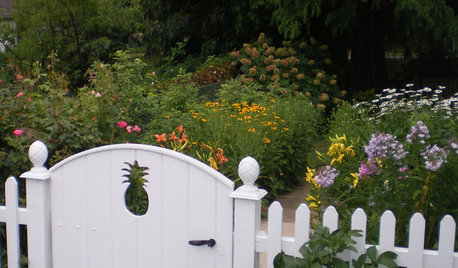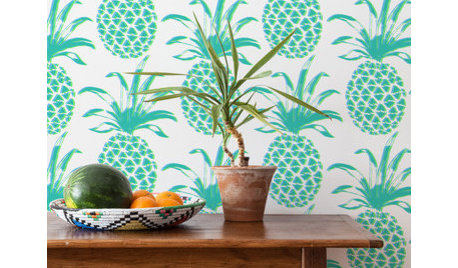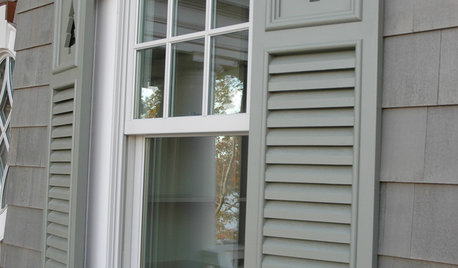Pineapple Tops
Barbara DeOca
22 years ago
Related Stories

DECORATING GUIDESDesign Mystery: Why Do Pineapples Sprout Up in Home Design?
Early Americans were bananas about pineapples — and we’re still reaping the benefits of the sweet fruit’s symbolism today
Full Story
PRODUCT PICKSGuest Picks: Pineapple Home Decor to Scoop Up
Pineapples may make a cool piña colada, but on table linens, wallpaper and more, they’re hot, hot, hot
Full Story
KITCHEN DESIGNCooking With Color: When to Use Yellow in the Kitchen
Perk up your kitchen with a burst of Pineapple Delight or a dollop of Top Banana on the walls, cabinets or countertops
Full Story
REMODELING GUIDESTop 10 Solutions for Architectural Peeves
Cavelike hallways, immovable shutters, poorly proportioned doors ... avoid these and other common gaffes with these renovation solutions
Full Story
MOST POPULARHow to Get Rid of Those Pesky Summer Fruit Flies
Learn what fruit flies are, how to prevent them and how to get rid of them in your home
Full Story
DECORATING GUIDESPop Culture Watch: 12 Home Trends from the '80s Are Back
Hold on to your hat (over your humongous hair); interior design elements of the 1980s have shot forward to today, in updated fashion
Full Story
LANDSCAPE DESIGNThe 7 Best Plant Types for Creating Privacy and How to Use Them
Follow these tips for using different kinds of plants as living privacy screens
Full Story
LIGHTINGTurn Up the Party Heat — the Sultry Decorating Secret
Give your home a warm and romantic vibe with candles at the entry, lined up along a wall, floating in martini glasses and more
Full Story
HOUSEPLANTSGo Tropical the Easy Way With Bromeliads
Months of blooms and a tolerance for low light make tropical bromeliads ideal as gifts, indoor centerpieces and outdoor eye catchers
Full Story
PRODUCT PICKSGuest Picks: Fun With Lamp Finials
Turn to finials of all styles and shapes to finish off a table or floor lamp with a thoughtful flourish
Full Story





Goofan2_vh1_com
nedragz4
Related Professionals
Danbury Landscape Architects & Landscape Designers · Elwood Landscape Architects & Landscape Designers · Salisbury Landscape Architects & Landscape Designers · Waunakee Landscape Architects & Landscape Designers · Newcastle Landscape Architects & Landscape Designers · Springfield Landscape Contractors · Doctor Phillips Landscape Contractors · Downey Landscape Contractors · Fort Worth Landscape Contractors · Gresham Landscape Contractors · Lees Summit Landscape Contractors · Melrose Park Landscape Contractors · New Berlin Landscape Contractors · Riverview Landscape Contractors · Markham Landscape ContractorsNigella
Epimedium1
peakpoet